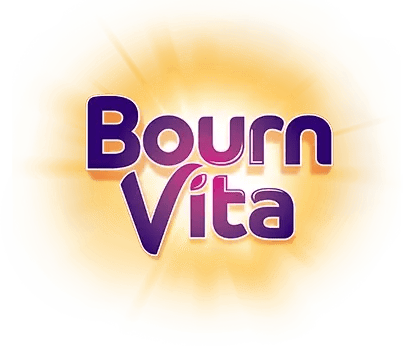- Improves Concentration and Focus
- Boosts Energy and Physical Strength
- Strengthening the Immunity
- Promotes Healthy Growth and Development
- Enhances Learning Ability
- Start the Day with a Nutritious Breakfast
- Include Fruits and Vegetables in Every Meal
- Choose Whole Grains and Homemade Foods
- Stay Hydrated with Healthy Drinks
- Snack Smart After School
Introduction
Healthy eating is key to how well students grow, learn and are active. When kids eat balanced meals made with real food, their bodies get the energy and nutrients they need to focus on class, play with energy and be healthy. For parents and schools, building healthy eating habits during school years is the biggest gift you can give a child.

You don’t need fancy or expensive ingredients to support good nutrition. Our kitchens are full of healthy options, simple additions like a handful of roasted peanuts, curd with lunch or a vegetable packed poha for breakfast can make a big difference.
When students eat right, they are less likely to fall sick, more likely to be active in school activities and better equipped to handle exam stress. Encouraging healthy habits early on sets the foundation for lifelong wellness.
5 The Benefits of Healthy Eating Habits for Students

Improves Concentration and Focus
A nutritious breakfast made with poha, upma, or whole wheat toast with peanut butter provides slow-releasing energy that keeps your child alert during morning lessons. According to FSSAI, foods rich in iron and protein like spinach, moong dal, and peanuts help improve oxygen flow to the brain, which supports concentration and memory.
Boosts Energy and Physical Strength
When your child eats meals filled with rice, dal, roti, vegetables, and fruits, their body gets the fuel it needs to run, play, and grow. As per BARC, bananas provide quick energy, while dals and whole grains keep that energy stable. Adding curd to meals also supports digestion, so the body absorbs nutrients better.
Strengthening the Immunity
According to, ICMR-National Institute of Nutrition, foods rich in vitamin C, like guava, amla, and oranges, along with turmeric and ginger, help boost your child’s immunity. Including seasonal vegetables like lauki, carrots, and beetroot keeps their body strong from within.
Promotes Healthy Growth and Development
According to a study published in, Treasure Island 2025, growing children need nutrients like calcium, protein, iron, and fibre — all of which are available in traditional Indian meals. Including paneer, curd, leafy greens, dal, and whole wheat chapatis helps in building strong bones, muscles, and healthy blood.
Enhances Learning Ability
Children who eat nutrient-dense foods are more likely to retain what they learn. According to a study published in, Nat Rev Neurosci 2010, Omega-3 fatty acids from flax seeds, vitamin B12 from dairy, and iron from green vegetables like palak play a direct role in brain development.
5 Healthy Eating Habits for Students to Follow

Start the Day with a Nutritious Breakfast
Never let your child skip breakfast. A healthy meal in the morning gives their brain the energy to stay focused and alert in class. Easy options like poha with vegetables, vegetable upma, moong dal chilla, or a banana with a glass of milk are great choices.
Include Fruits and Vegetables in Every Meal
Make sure your child eats at least one fruit and a portion of vegetables every day. You can pack sliced cucumbers, carrots, or boiled corn in their tiffin, or add grated lauki or palak to parathas. Seasonal fruits like mango, guava, banana, or papaya are rich in vitamins and fiber, perfect for growing children.
Choose Whole Grains and Homemade Foods
Instead of refined products like white bread or noodles, go for whole wheat rotis, brown rice, or dalia. These grains give steady energy and are easy to digest. Homemade khichdi, idli, or vegetable pulao are filling, nutritious, and much better than processed snacks.
Stay Hydrated with Healthy Drinks
Encourage your child to drink enough water throughout the day. Fresh coconut water, lemon water with a pinch of salt, or homemade buttermilk (chaas) are better than sugary sodas or packaged juices. Staying hydrated helps in digestion, keeps the mind fresh, and prevents tiredness in the afternoon.
Snack Smart After School
After school, children often feel hungry and reach for chips or sweets. Offer healthier options like roasted chana, murmura chaat with chopped onions and tomatoes, fruit salad, or curd with jaggery. These snacks are satisfying and rich in protein, fiber, and natural sugars that help your child stay full and focused for homework or play.
Conclusion
Healthy eating isn’t about strict diets or cutting out fun — it’s about creating balance with real, nourishing food. With ingredients easily available in your Indian kitchen, you can shape your child’s health, happiness, and success one meal at a time. When students eat right, they feel right, and that shows in their classroom, playground, and everyday life.
Her love for storytelling began with reading her grandfather’s speeches, where Tarishi saw the power of words in creating lasting memories. Combining her passions for food and writing, she has turned her life into a fulfilling path of sharing stories that celebrate flavours and how food brings communities together.
The views expressed are that of the expert alone.
The information provided in this content is for informational purposes only and should not be considered a substitute for professional medical advice, diagnosis, or treatment. Always seek the advice of your physician or another qualified healthcare provider before making any significant changes to your diet, exercise, or medication routines.
References
https://pmc.ncbi.nlm.nih.gov/articles/PMC2805706/
https://www.ncbi.nlm.nih.gov/books/NBK562207/
https://www.nin.res.in/dietaryguidelines/pdfjs/locale/DGI24thJune2024fin.pdf
https://www.barc.gov.in/technologies/banana_health_drink/index.html
https://nhm.hp.gov.in/storage/app/media/uploaded-files/Iron%20rich%20food1.pdf
















